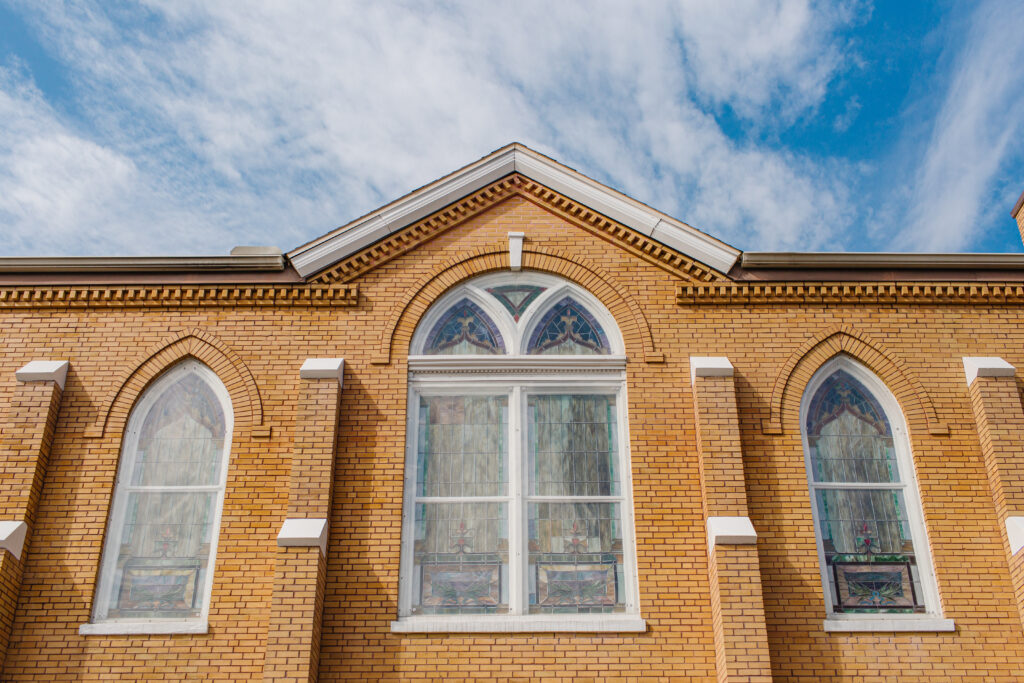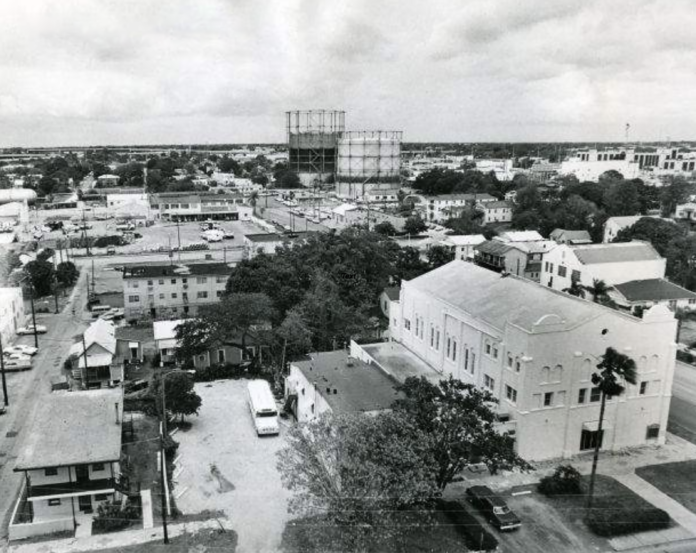As discussions progress on the future of the Historic Gas Plant district and Tropicana Field, it is worthwhile to reflect on some of the important institutions that were displaced when the historically African American neighborhood was demolished in the late 1970s and early 1980s.
The Gas Plant Neighborhood
The neighborhood that grew into the Gas Plant area developed as dozens of the African American laborers who built the Orange Belt Railroad in 1888 settled near the train’s original terminus, around the juncture of today’s Dr. Martin Luther King Jr. Street and First Avenue S. A neighborhood originally called Peppertown developed, followed closely by Cooper’s Quarters and other small enclaves like Little Egypt and Forty Quarters. The area eventually came to be known collectively as the Gas Plant neighborhood, named after two large city-owned gas storage cylinders in the area.
Because many of the city’s first residents were the African-American laborers who built the railroad, many of our earliest institutions served the Black community. Those workers were some of the first people to reside at the Detroit Hotel, for example, when they were extending the rail line to Tampa Bay. Likewise, the congregation of the striking Bethel AME Church at 912 Third Ave. N, in historic Methodist Town, is one of the oldest in St. Petersburg, building their first church at that site in 1894. (The current building was constructed in 1922.)
The City’s First Masonic Lodge
Another of the city’s longest-running institutions is Masonic Lodge No. 109, founded on January 11, 1893, under jurisdiction of the Florida Grand Lodge, Prince Hall Affiliation. (Prince Hall Freemasonry is the oldest and largest predominantly African-American fraternity in the United States.) Lodge 109 held its first regular meeting at Eighth Street S and Charles Court, in Peppertown. The city’s first white Masonic organization, Lodge 139, was formed the following year.
Lodge 109 built a temple at 1035 Third Ave. S, in the Gas Plant neighborhood, in the late 1920s or 1930s. The large two-story building served as an important community venue and meeting space used by many other clubs and organizations, like the Colored Veterans of the World War and the Women’s Auxiliary of the American Legion.
The First Library for African Americans
The Masonic Temple was also home to the city’s Negro library, beginning in 1947. This was the second location of the city library for African Americans. In 1928, the Business and Professional Women’s Club (an organization for white women) took up the cause of founding a library for the Black community after St. Petersburg’s Library Board stated that a branch library for African American residents wasn’t feasible “at this time.” A 350-book library was opened in a recently established recreation area for Black residents on land owned by T.C. Campbell between Sixth and Seventh Avenues S and 14th and 16th streets. (Later, the city purchased this land and officially designated it as Campbell Park.) The library, staffed by Ms. Thelma Williams, a recent graduate of what the newspaper referred to as the “Colored College of Tallahassee” (presumably referring to Florida A&M), was a great success. By the next year the City of St. Petersburg took over its management, “satisfied that it was filling a need among the Negro populace.” Williams managed the library for more than 12 years before moving out of Florida, and the library closed in 1943 due to staffing issues and public debate over the use of Campbell Park by Black residents.
In April 1947, a committee made up of influential African American women in the city celebrated the opening of the newly named James Weldon Johnson library in a 1,000 square-foot space that the city rented from the Masonic Temple for $25 a month. The library, named after a poet and writer from Jacksonville, was especially popular with schoolchildren like Wilbur Williams Jr. By August of that year, he had read 126 books from the library, as the “Negro News” section of the St. Petersburg Times highlighted. Wilbur was 10 years old, and a student at all-black Davis Elementary School, just a stone’s throw from the Masonic Temple. (Davis Elementary was on the site of today’s Wayland apartment building at 10 Street S and Third Avenue.)

Replacing the Irreplaceable
In 1979, the Johnson library moved to the Enoch Davis Center as it became clear that the Gas Plant neighborhood would be razed as an “urban renewal” project. Members of the Masonic Lodge held on longer, demanding that the city give them the replacement value of their building rather than the “fair market” value that the city offered, a difference of close to $200,000. City officials said they couldn’t offer more, despite the fact that neighborhood churches were being given replacement value for their buildings.
“We really just can’t get ourselves into the situation of offering everyone the replacement value of their property,” the city’s director of urban redevelopment said. He went on to say that churches were given more money because it was harder for them to find suitable buildings, and they served a wider cross-section of the population, but the Masons of Lodge 109, on the other hand, were “really not a very large group.” Masonic Lodge members countered that they had been renting space to the city for years for the James Weldon Johnson Library, at below-market rates, a consideration in the valuation of the building. The case went to court, with the Masons eventually being awarded the replacement value of $224,000. The lodge ultimately moved to 18th Avenue S.
Today there are no vestiges of the large white Masonic Temple at 1035 Third Ave. S that was once home to the first Masonic lodge in the city, and the second location of the city library for African Americans. Visitors to Tropicana Field can only imagine it as they walk past its location when approaching the stadium from the east along the pedestrian walkway through Parking Lots 6 and 7.



